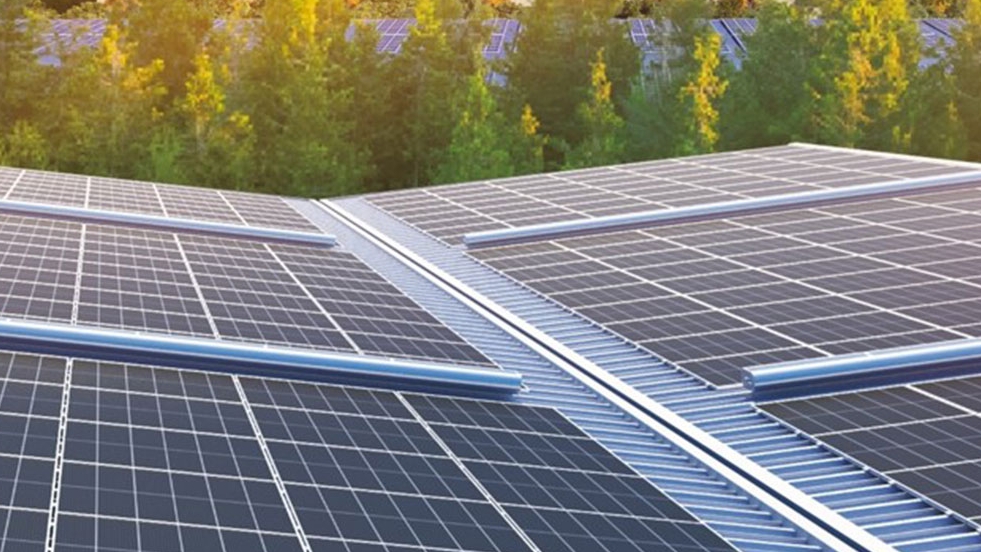分布式光伏发电:屋顶上的 “阳光银行” 发电记
在能源转型的浪潮中,分布式光伏发电宛如藏在千家万户屋顶上的 “阳光银行”,将免费的阳光转化为电能,既点亮了生活,又为可持续发展注入活力。这种发电模式打破了传统集中式发电的局限,以灵活、分散的方式融入我们的日常,其背后的原理与优势值得细细探究。
In the wave of energy transformation, distributed photovoltaic power generation is like a "sunshine bank" hidden on the roofs of thousands of households, converting free sunlight into electricity, lighting up life and injecting vitality into sustainable development. This power generation model breaks the limitations of traditional centralized power generation and integrates into our daily lives in a flexible and decentralized manner. The principles and advantages behind it are worth exploring in detail.
分布式光伏发电的核心原理,是利用太阳能电池板的 “光电效应”。太阳能电池板由众多光伏电池组成,这些光伏电池多采用硅材料制作。当阳光照射到电池表面,光子与硅原子发生碰撞,使得硅原子中的电子获得能量并逸出,在电池内部形成电子 - 空穴对。通过特殊的结构设计和电路连接,这些电子被引导形成定向流动的电流,从而产生直流电。但日常生活和电网使用的多为交流电,因此还需要通过逆变器,将直流电转换为符合标准的交流电,才能供用户使用或并入电网。
The core principle of distributed photovoltaic power generation is to utilize the "photoelectric effect" of solar panels. Solar panels are composed of numerous photovoltaic cells, most of which are made of silicon materials. When sunlight shines on the surface of the battery, photons collide with silicon atoms, causing electrons in the silicon atoms to gain energy and escape, forming electron hole pairs inside the battery. Through special structural design and circuit connections, these electrons are guided to form a directed flow of current, thereby generating direct current. However, most of the electricity used in daily life and on the power grid is AC power, so it is necessary to use an inverter to convert DC power into AC power that meets the standards before it can be used by users or integrated into the power grid.
与集中式大型电站不同,分布式光伏发电具有 “贴近用户、就地消纳” 的特点。它可以安装在居民住宅的屋顶、工商业建筑的屋面,甚至是农业大棚的顶部。在居民家中,几块太阳能电池板就能组成小型发电系统,所发电力优先满足家庭用电需求,多余电量还可输送到电网,实现 “自发自用,余电上网”。对于工厂、商场等工商业建筑,大面积的屋面为光伏发电提供了充足空间,建设的分布式光伏电站不仅能降低企业自身用电成本,减少对传统能源的依赖,还能在节能减排方面发挥积极作用,助力企业实现绿色发展。
Unlike centralized large-scale power stations, distributed photovoltaic power generation has the characteristics of being "close to users and locally consumed". It can be installed on the roofs of residential buildings, industrial and commercial buildings, and even on the top of agricultural greenhouses. In residential homes, a few solar panels can form a small power generation system, which prioritizes meeting household electricity needs. Excess electricity can also be transmitted to the power grid, achieving "spontaneous self use and surplus electricity grid connection". For industrial and commercial buildings such as factories and shopping malls, large areas of roofs provide ample space for photovoltaic power generation. The construction of distributed photovoltaic power stations can not only reduce the electricity costs of enterprises themselves and their dependence on traditional energy sources, but also play a positive role in energy conservation and emission reduction, helping enterprises achieve green development.

分布式光伏发电的安装流程严谨有序。首先要进行选址与评估,综合考虑安装场地的光照条件、面积大小、承重能力等因素。在光照资源丰富、无高大建筑物遮挡的区域,太阳能电池板能接收更多阳光,发电效率更高;同时,建筑物的屋顶结构需能承受电池板及相关设备的重量。评估完成后,根据实际需求设计发电系统方案,确定电池板的数量、布局,以及逆变器、支架等设备的选型。接下来进入施工阶段,安装人员先搭建牢固的支架,将太阳能电池板按照设计角度和间距固定在支架上,确保电池板能以最佳姿态接收阳光;然后连接线路,将电池板产生的电力引入逆变器进行转换;最后完成与电网的连接调试,确保发电系统安全、稳定运行。
The installation process of distributed photovoltaic power generation is rigorous and orderly. Firstly, site selection and evaluation should be conducted, taking into account factors such as lighting conditions, area size, and load-bearing capacity of the installation site. In areas with abundant lighting resources and no obstruction from tall buildings, solar panels can receive more sunlight and have higher power generation efficiency; At the same time, the roof structure of the building needs to be able to withstand the weight of solar panels and related equipment. After the evaluation is completed, design a power generation system plan based on actual needs, determine the number and layout of battery panels, as well as the selection of inverters, brackets, and other equipment. Next, entering the construction phase, the installation personnel first build a sturdy bracket and fix the solar panels on the bracket according to the design angle and spacing, ensuring that the panels can receive sunlight in the best posture; Then connect the circuit and introduce the power generated by the solar panel into the inverter for conversion; Finally, complete the connection and debugging with the power grid to ensure the safe and stable operation of the power generation system.
这种发电模式带来的效益是多方面的。从经济角度看,用户不仅能节省电费开支,还能通过余电上网获得收益,实现 “用阳光赚钱”。在环保层面,分布式光伏发电使用清洁能源,每发一度电,就能减少相应的煤炭消耗和二氧化碳排放,为改善空气质量、应对气候变化贡献力量。此外,分布式光伏的发展还能带动相关产业,创造就业机会,促进地方经济发展。
The benefits brought by this power generation mode are multifaceted. From an economic perspective, users can not only save on electricity bills, but also earn income by connecting surplus electricity to the internet, achieving the goal of "making money with sunshine". In terms of environmental protection, distributed photovoltaic power generation uses clean energy. With each kilowatt hour of electricity generated, it can reduce corresponding coal consumption and carbon dioxide emissions, contributing to improving air quality and addressing climate change. In addition, the development of distributed photovoltaics can also drive related industries, create employment opportunities, and promote local economic development.
本文由分布式光伏发电情奉献.更多有关的知识请点击:http://www.zdnygf.com我们将会对您提出的疑问进行详细的解答,欢迎您登录网站留言.
This article is a friendly contribution from distributed photovoltaic power generation For more information, please click: http://www.zdnygf.com We will provide detailed answers to your questions. You are welcome to log in to our website and leave a message
新闻推荐
product recommendation联系方式
Contact Information

 TEL:0531-82390078
TEL:0531-82390078 TEL:18805312017
TEL:18805312017 MAI:sdzdny001@163.com
MAI:sdzdny001@163.com 公司地址: 济南市历下区山大路157号
公司地址: 济南市历下区山大路157号 天合蓝天·山东种电
天合蓝天·山东种电 备案号:鲁ICP备17052940号-2
鲁公网安备37010202700164号
备案号:鲁ICP备17052940号-2
鲁公网安备37010202700164号
 网站地图|XML|TXT
网站地图|XML|TXT

扫一扫方便咨询我们

截屏,微信识别二维码
微信号:18805312017